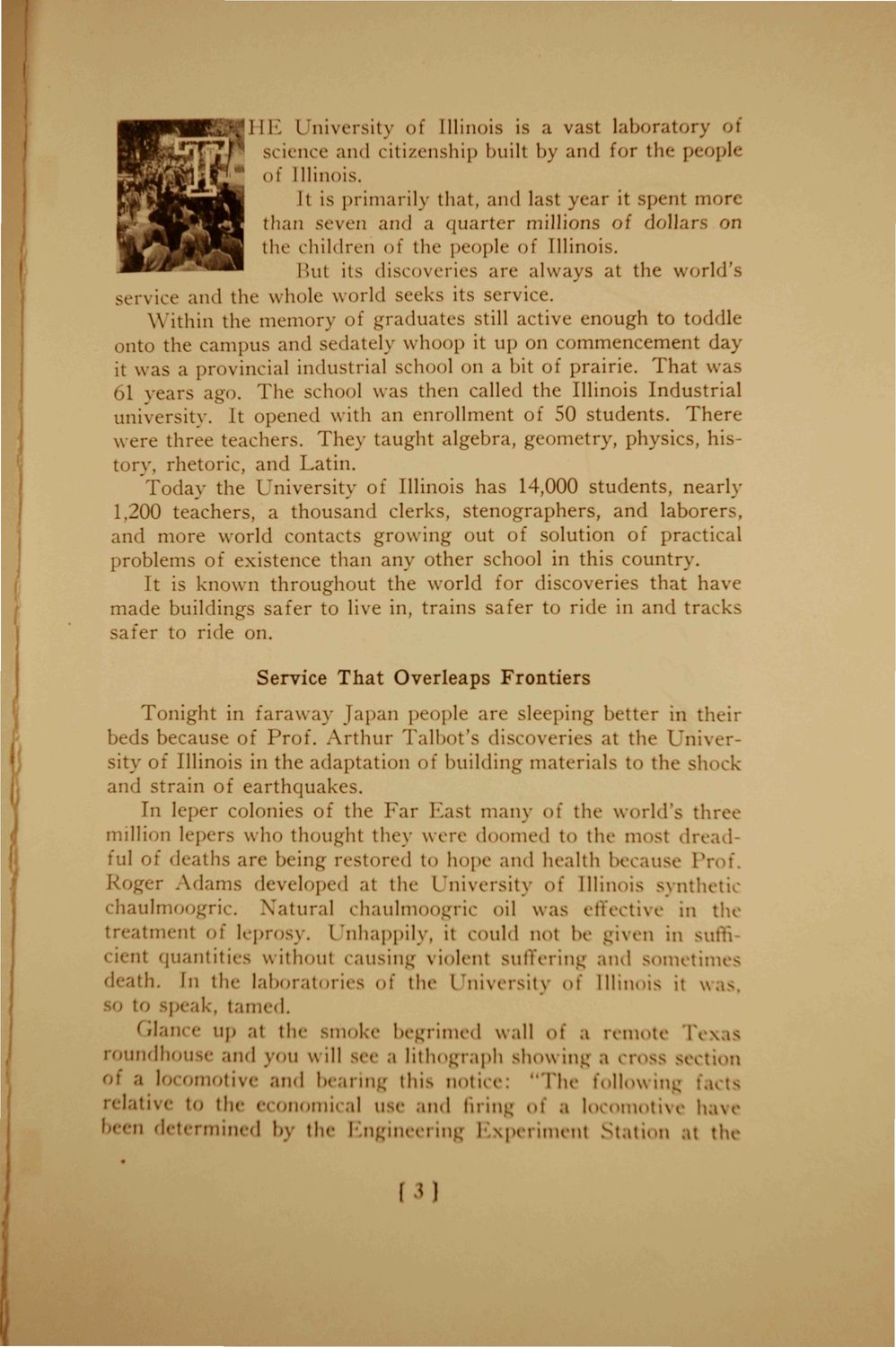Caption: Booklet - Citizenship at UI (1929)
This is a reduced-resolution page image for fast online browsing.

EXTRACTED TEXT FROM PAGE:
• ]IK I n i v e r s i t y of Illinois is a vast laboratory of ^ science ami citizenship built by and for the people of Illinois. It is primarily that, and last year it spent i n o r than seven and a quarter millions of dollars on the children of the people of Illinois. But its discoveries are always at the world ice and the whole world seeks its service. Within the memory of graduates still active enough to toddh onto the campus and sedately whoop it up on commencement day it was a provincial industrial school on a bit of prairie. T h a t wa Ol years ago. T h e school was then called the Illinois Industrial university. It opened with an enrollment of 50 students. T h e r e were three teachers. T h e y taught algebra, geometry, physics, his tory, rhetoric, and Latin. Today the University of Illinois has 14,000 students, nearly 1.200 teachers, a thousand clerks, stenographers, and laborers, uid more world contacts growing out of solution of practical problems of existence than any other school in this country. It is known throughout the world for discoveries that have made buildings safer to live in, trains safer to ride in and tracks safer to ride on. Service That Overleaps Frontiers Tonight in faraway J a p a n people are sleeping better in their beds because of Prof. Arthur Talbot's discoveries at the Univei sit}' of Illinois in the adaptation of building materials to the shock and strain of earthquakes. In leper colonies of the Far East many of the world's three million lepers who thought they were- doomed to the most dre. 1ful oi deaths are being restored to hope and health because IV f. Roger Adams developed at the University of Illinois synthetic chaulmoogric. Natural chaulmoogric oil was effective in the treatment of leprosy. Unhappily, it could not be given in sufl cient quantities without causing violent suffering and sometime eath« In the laboratories of the University of lllim s it w >. o to s| tamed, Glance up at the smoke begrimed wall of a remote fcxas roundhou ind you will sec .i lithograph showing .i cross section ol a locomotiv< and bearing tins notice: "The followir acts relative to the economical use and firing of a locomotive have I" '" determin I by the I n in< ring 1 \ p e n m e n t Station at the i i)
|